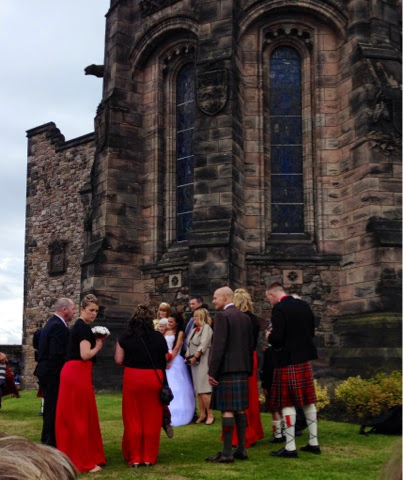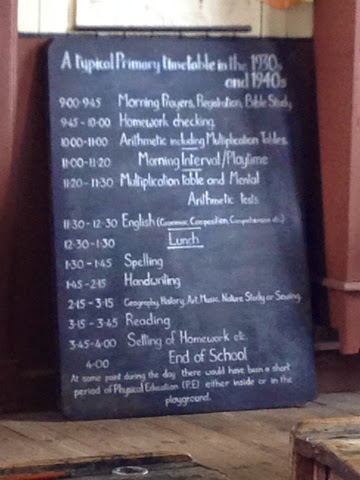Thanks for following my adventure!
Friday, July 4, 2014
Heading hoooooome!!!
In the Edinburgh airport...enroute to Heathrow where the MT and ID delegations depart to recheck luggage to the States. Early morning, but we're all happy to be going home! The 4th of July has just ended for you, and I am about to board British Airways on the morning of July 5th. Crazy!!
Thursday, July 3, 2014
Edinburgh...LAST DAY!!
Today we leave Aviemore and drive to Edinburgh from where we depart for home tomorrow!! Once again, we missed the queen by one day!! Both she and HRH the Duke were on The Royal Mile in Edinburgh all day yesterday! *sigh*
Happy 4th of July!!
We left around 8:00, arriving in Edinburgh at 10:30. We went straight to The Royal Mile, walking the shops and cafés. Tartans galore, including Wilson, which is an ancient clan and tartan. I need to really do some family ancestry research...am I Welsh or Irish or Scottish?! Or a mix of all? Super fascinating and cool to see a family name among the tartan scarves. Edinburgh is a great mix of old and new!
After a great lunch of vegetable Wellington (mushrooms and other veggies in a pastry cup), we walked back to Edinburgh Castle. We wandered through for a couple hours, seeing the Scottish Royal Jewels, Military History Memorial, Military Prison.
The view of Edinburgh from the castle is awesome.
We were lucky enough to watch the changing of the guard at the military history memorial, then met Margaret who told us how she became St. Margaret only 50 years after her death and directed us to her chapel...built by her son, King David, in the 1200s. When Robert the Bruce brought the clans to storm the castle, they were told the chapel must not be touched...and it still stands today!
Before we left the castle we were able to see a wedding party! Very cool.
And now it is off to a final dinner of fish and chips, then our hotel close to the airport, and in a mere 12 hours from now we will be at the airport ready to go to Heathrow then back to the States!! Very ready to get home and get some sleep and normal food. It has been great to see all five countries of the UK, and I really hope to come back someday to re-visit my favorites! Trip has come to an end...and I am ready to go home. :)
Haggis and Highland Games
We went to the Scottish Folk Museum and got to taste haggis and tatties! (Tatties are mashed potatoes.) Haggis just tastes like sausage...I ate all of mine!
Then we led the kids on three different Highland Games: caber toss (small 6' cabers), stick ball relay, and a wellie toss.
Next we went to a 1937 schoolhouse and classroom and had a pen and ink cursive lesson! Definitely my favorite part of today!
Sheepdogs
A visit to a working sheepdog training farm...complete with puppies and lambs and hand-shearing! Very fun to watch and play.
Nessie!
And here we are looking at a bit of Loch Ness, a large and very deep lake in the Scottish Highlands.
Whitewater rafting!
Today, after listening to Alan Torrance teach us about Scottish kilts and battle, we drove to Aberfeldy and rafted the River Tay for two hours! I am exhausted.
They haven't had much rain here lately, so the river was very low. We had to walk our raft once, and we got stuck and high-centered a couple other times. We stood up through the first set of rapids, and spun several times through other small eddies and rapids. It was pretty darn fun, but just a river float since it was low and slow.
Wednesday, July 2, 2014
Alan Torrance
Scottish storyteller Alan Torrance, who trained all the actors for Braveheart. He is wearing a warriors' kilt, which was worn by both men and women. Ancient kilts don't have stitched pleats as modern kilts do. This tartan has no name because it pre-dates the naming of tartans. (Tartans are universal and worn all over the world.)
Learning to put on an ancient kilt, 6 yards long by 60" wide. They were so long to be able to be used for many things: tents, stretcher, ripped for bandages, a blanket, etc.
Hand-pleating the kilt before putting it on.
If a female wears it, she wears it as an outfit/dress. When a male wears it, it is worn only over the legs.
The pull string belt is left so it can quickly be removed in battle to remove the extra fabric.
The kilt is long to protect your legs, especially when training for battle. The locking belt holds it all in place for travel.
Sides are tucked up and doubled to make pockets and hold stones or other items.
In cold weather you bring the back up to make a coat. Kilts keep out the dampness.
You tie the kilt up over your opposite shoulder from your writing hand. This now makes an even bigger pocket or even a baby sling.
Females wore tartans differently.
All Scottish families have their own tartans, but these are from modern times. In ancient times, only royalty had their own tartans. Most families had their own plants instead. (Alan's family has a yew tree.) The plant would be worn on their hat with a feather. An eagle feather means you are a captain.
Two or three eagle feathers means you are a chief.
Shield is called a podge. The short dagger-type sword is called a duck. Both are held by the non-dominant hand.
Broad swords were used to attack five areas: armpits, sides of knees, and throat. The Scots dressed like this are running warriors.
Axes would be used by close warriors. Short weapons versus running weapons
A long spear rounds out the battalion of warriors, trained from age 11-18. Fought on foot with spears, axes and swords/daggers. Long weapons can be used to get a warrior on horseback or even wound a horse.
So great listening to this Scottish storyteller and his accent!!
Women and men played the same roles in battle, all genders in ancient history went into battle.
In contrast to Roman or Norman warriors, Scottish warriors didn't wear helmets or armor. They knew Scots liked to attack throats and arms, so they made chain mail.
These weapons were made to combat the armor and gut a person or horse.
This is a claymore, as used by William Wallace. It is a two-handed sword and used in the back line.
The basket is steel was made in the 15th century to protect the hand from damage so you wouldn't need to drop your weapon. (The swords from earlier didn't have the protection.)
Scots started using muskets once they were brought from America, but they would fire them from up high, drop them, and then charge with a sword- they didn't take the time to reload. Pistols were eventually used, but they would be thrown once fired, no time was wasted to reload.
Mac means son of
Mc means daughter of
Men stated their line by fathers: son of son of son of, etc
Women stated their line by mothers:daughter of daughter of daughter
Some clans had a war cry
Campbells had a war cry: Cruican!
The war cry was a powerful weapon. A thousand warriors yelling could make the enemy feel it on their skin when the sound reached them across the battlefield.
You could finish your training at age 18, but you still need to prove yourself with dance.
Dancers would do it barefoot. Dancing taught speed and agility.
There are many different moves and increasing speed to the dances.
Broadsword dance is done before a battle and can be massive and done in a field. It starts when the bagpipes play and is very dramatic. 1689 the savages of Scotland overcame the British when they danced before the battle, the last time claymores were used in battle.
Dancing was also done to celebrate life and celebrate animals.
This dance celebrates both the male and female warriors.
The kilt is an ancient garment and was worn long before undergarments were invented. Military kilted regiments must be worn traditionally, with nothing underneath.
Subscribe to:
Comments (Atom)
















































































